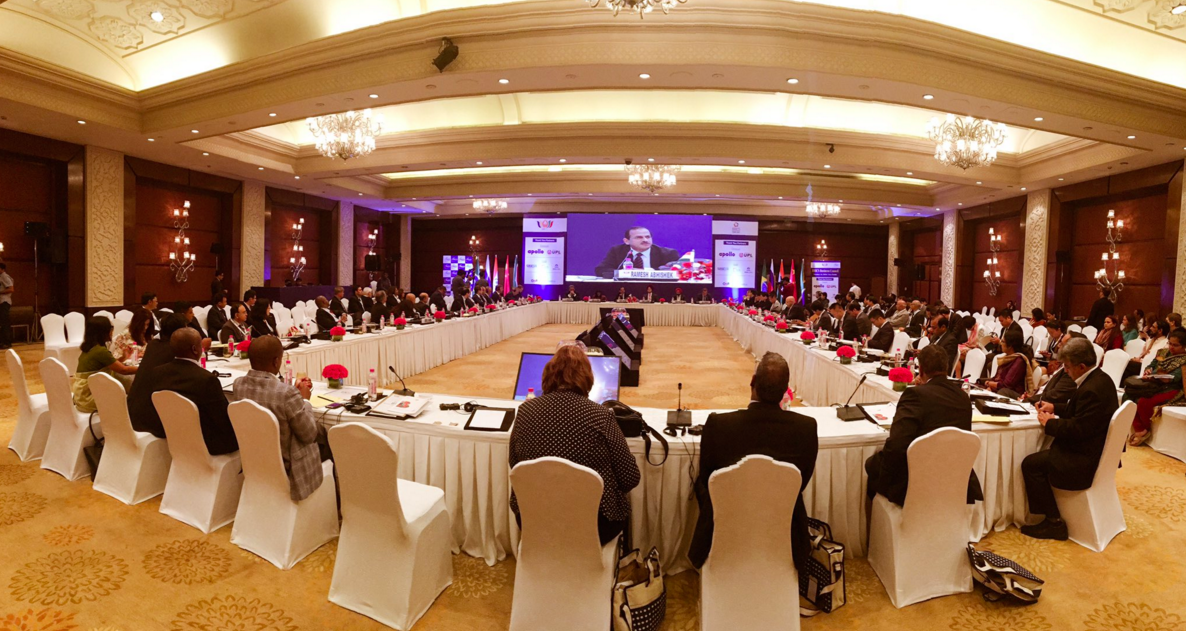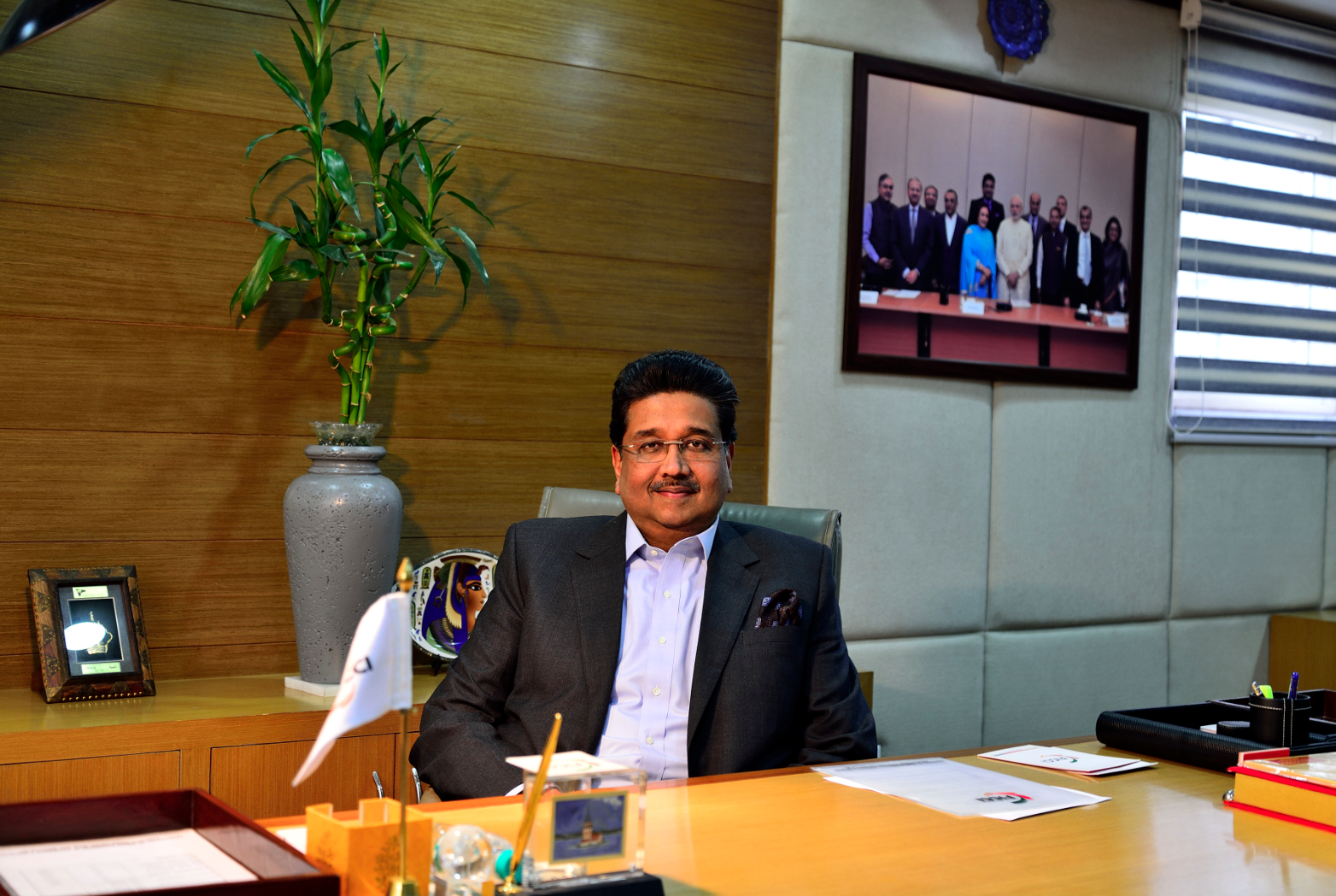Intra-BRICS trade has a long way to go

The Trade Fair was the first event connecting all sizes of business in the history of BRICS.
twitter.com/BRICS2016The first BRICS Trade Fair held in the Indian capital ahead of the BRICS political summit in Goa was a grand event aimed at boosting otherwise weak trade relations and investments between five BRICS countries (intra-BRICS trade so far stands at around $242 billion which is less than 5 percent of the total trade of BRICS nations).
With around 300 exhibitors from key economic sectors, from manufacturing to IT to agriculture and pharmaceuticals, the Trade Fair was the first such event connecting all sizes of business in the history of BRICS.
“We know that the world is going on through a difficult time, there is an economic slowdown that is impacting everyone, so we have to look for alternatives, we have to create new connections, new partnerships. In this sense, getting businesses of five countries together is great and now the structure is being laid down,” said Didar Singh, Secretary General of FICCI.
“The whole idea of BRICS trade fair was that the political connectivity must convert into trade activity. The first trade fair is a step in this direction”.
He added that BRICS is a new idea and as businesses are usually slow to accept novelties, so the process of businesses coming closer within BRICS framework will take time.
“Our main challenge while organizing the Fair was to convince the businesses to participate because BRICS is new, nobody had any idea of what can come out of it. There was a lot of hesitation in planning and investing initially, but we used our partnership across all countries and got tremendous support”, Didar Singh told RIR.
The ground reality of the three-day event highlighted the main obstacles for more extensive trade between BRICS that the countries are yet to be overcome. Despite the leadership of BRICS countries recognizing mutual potential, either in learning from each other or in cooperating in such sectors as energy, infrastructure, agriculture, food processing and IT, the challenges to working closely remain unresolved.
“The main challenge is to create a business environment. At the end, business is represented by private companies that have to deliver feasible results to the shareholders,” José Rubens de La Rosa, Chairman, BRICS Business Council, Brazil said in the conversation with RIR. “We need to provide companies certainty. WE have to have clear rules, rules known to businesses in advance. Now everyone has different laws or interpretations and we have to put all these together to create a known environment.”
He said the BRICS Business council has been working on identifying the challenges that BRICS businesses are facing and possible ways to tackle them. A 90-page report was submitted to the heads of BRICS states during the Goa summit.
Danisa Baloyi, Chairman, Black Business Council, South Africa, believes the idea of BRICS came at the right time for all five economies as, being emerging economies, they share same challenges and the same focus and can work together better than with developed countries.
“Coming together with the idea of New Development Bank is the most brilliant and it will be good for NDB to focus more on business to business lending rather than government to government lending. We must balance it so that businesses of BRICS countries can find alternative ways of funding that they will otherwise not find in countries that do not share the same focus, same challenges with us,” she said.
Baloyi said the underdeveloped infrastructure and regulatory framework hampers economic cooperation between BRCIS countries.
“If I want to do business in India or in China or Brazil it should just be seamless because we are already in the BRICS grouping. But if I come here and I am stuck because the economy is not open enough to do business, it’s a problem. So if we can deal with infrastructure, development challenges, provide adequate financing and ensure we deal with barriers to entry, we are good to go,” she said.
Mikhail Mamonov, Managing Director of International Project of the Russian Export Centre pointed out that so far, BRICS has been rather like a club; strong politically but weaker on the economic integration part, and for a reason.
“Logistics is a huge issue. For example, much could be happening between Brazil and Russia but half of the project would be killed by logistics. We need to make mutual concessions towards mutual acknowledgment of certification, and other procedures. We need to make other markets more aware of our goods, we need to promote and encourage participation of BRICS companies in national and international events, we need to enhance international cooperation in terms of providing good and services to the third parties,” Mamonov said.
BRICS trade fair visitors and exhibitors interviewed by RIR noted that apart from issues such as logistics and regulation, the lack of information on each country’s potential for business and the lack of a common language of communication, remain the main obstacles for intra-BRICS cooperation in trade. This was especially so for small and medium businesses. The gap between developments at the highest political level of BRICS and the ground reality remains huge, many business owners believe.
Addressing the BRICS Business Forum in New Delhi, members of BRICS Business Councils voiced several initiatives aimed at tackling the challenges. These included creating common platforms for exchange of information on trade, regulations and standardization, and expanding the scope and scale of payments in the local currencies of BRICS countries. Among other suggestions were creating a BRICS Angel network to unlock the potential of young entrepreneurs, creating a startup ecosystem and promoting innovations in BRICS countries.
Although it may take years for all these suggestions to turn into practice, initiatives like the BRICS trade fair sent businesses a strong signal to find their own ways of identifying untapped markets of BRICS and developing stronger business ties.
All rights reserved by Rossiyskaya Gazeta.
Subscribe
to our newsletter!
Get the week's best stories straight to your inbox

